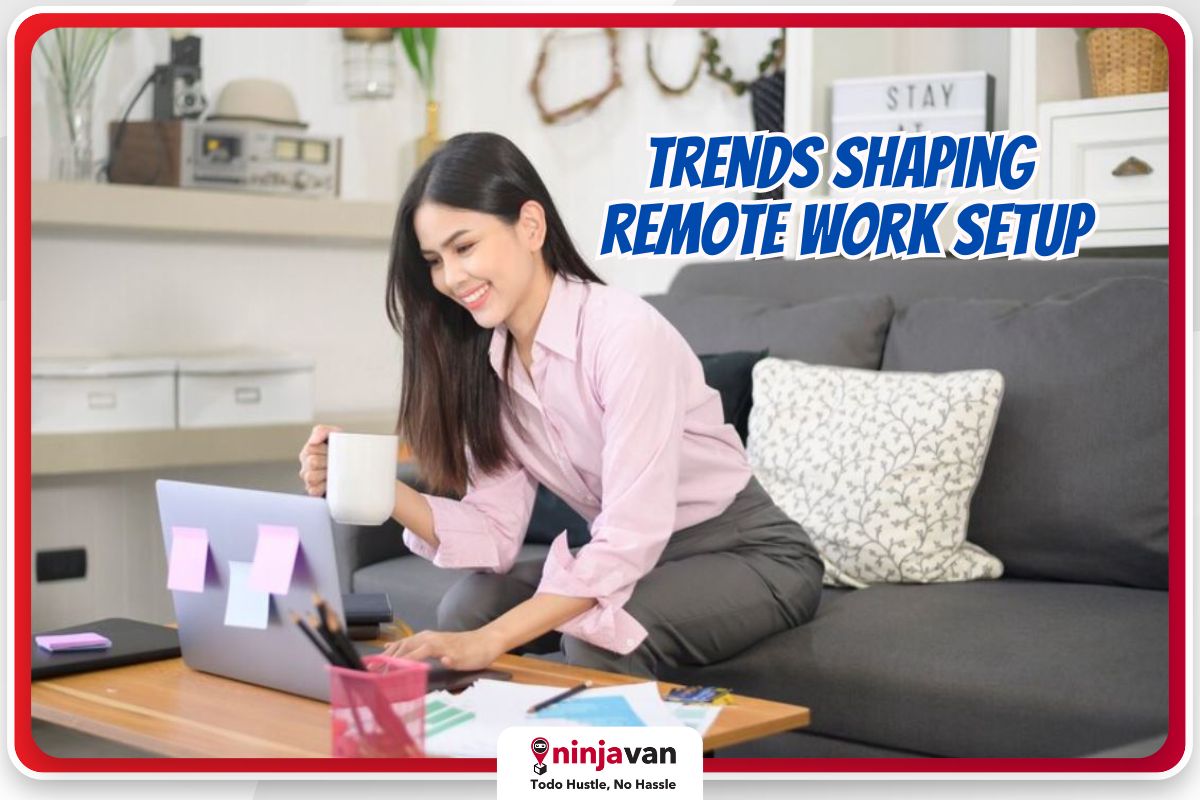Businesses quickly shifted to a remote work setup as the Philippines implemented a nationwide quarantine amid the pandemic in 2020. What was supposed to be a two-week quarantine turned into a two-year lockdown, leading many companies to continue their operations remotely.
Some businesses have transitioned back to a traditional office setting today. Others have evolved to a hybrid work setup, as some employees left their 9-to-5 jobs to be digital nomads.
Remote work has transformed how Filipinos view their jobs and that has affected the overall business landscape in the country.
What is remote work?
Remote work is an arrangement where employees don’t have to be physically present in the office. Using available technology, they can complete their tasks and communicate with their teams virtually.

Remote employees work for companies full time or part time, leaving room for entrepreneurial opportunities and extra income.
Is remote and work from home the same?
Although terms like “remote work” and “work from home” are similar, they’re different in some ways. Remote work employees can work anywhere outside of an office. They can work from home, co-working spaces, cafes or even while traveling.
A work from home setup, however, is limited to the employee’s residence. Some employers discourage employees from working in public spaces due to security risks (such as company laptops getting stolen or lost, hackers accessing company data through public WiFi, etc.) or hardware requirements.
Why has remote work become popular in the Philippines?
Remote work offers many benefits, making it an appealing choice for Filipinos:
- Avoid heavy traffic: Filipino employees who don’t live near their workplace understand the frustration of traffic. In 2023, Metro Manila topped the TomTom Traffic Index list for worst traffic in metro areas globally. Remote work removes the need to travel to work and gives back the hours typically spent on the road for other personal activities.
- Cost Savings: Employees save up on commuting costs, gas, toll fees, clothes, food and other costs associated with working in an office. Businesses, in turn, save on overhead, such as office space and utilities, since they only need smaller offices for non-remote roles.
- Work-life balance: Work can start and end on time for remote employees, and they don’t have to worry about the added hours of commuting home. Some companies also allow flexible hours, helping workers spend more time with families and on personal concerns.
- Mental well-being: Working remotely can reduce the sources of stress. Remote employees don’t have to worry about running late for work because of traffic. Employees can immediately wind down and prioritize their well-being.
- Location independence: Remote work setup has allowed many Filipinos to return to their home provinces instead of staying in cities for work. Additionally, more companies around the world are offering remote jobs to qualified applicants.
5 trends shaping the remote work setup
1. Technological advancements
More technology has made remote work accessible. In the Philippines, many businesses use video conferencing platforms (e.g. Zoom, Google Meet), Google Workspace, project management tools (Trello and Teamwork) and cloud storage (Google Drive, OneDrive).
2. Access to talent
Companies are no longer limited to employees who live nearby, are willing to travel daily or can relocate. Filipinos can find remote work in the Philippines or apply for jobs with international companies.

3. Minimizing disruptions
Typhoons, flash floods and other inclement weather patterns have made it difficult for employees to commute to their workplace. With remote work, businesses ensure that operations continue as employees work safely from home.
4. Hybrid work models
Although some companies returned to a traditional office setup, some have adapted hybrid work models. Employees have to be in the office for a set number of days per week or month, or only when needed.
5. Digital nomads
As remote work is becoming more common globally, employees in various countries – including Filipinos – explore the digital nomad lifestyle.
5 challenges to the remote work setup
- Communication: Employees need to have good interpersonal communication to be an effective remote worker. Ineffective communications can lead to workplace conflict, operational issues and other problems that wouldn’t exist through face-to-face interactions.
- Isolation and loneliness: People who enjoy the casual, social interactions in an office setting may find remote work isolating, especially if they live alone. Video calls with teams and virtual activities can foster company culture.
- Security concerns: Companies have concerns with remote employees handling sensitive data. If employees aren’t knowledgeable in basic security practices, they can become a liability for data breaches, hacking and theft, compromising the company’s reputation.
- Technological limitations: Filipino remote workers can experience common technical issues, such as unstable internet connection and hardware malfunction.
- Tracking performance: Some companies want to ensure that employees are working during their scheduled hours, so they implement tracking software in their employees’ hardware. This becomes an issue if an employee is using their personal computers or employees don’t respond well to micromanagement.
4 Tips to keep team productivity up during remote work
1. Provide working equipment
Ensure your employees are equipped to work remotely. You can do this by delivering computers and other necessary hardware to their homes. You can also provide a one-time allowance to help employees create a home office.
2. Provide the right tools
Invest in quality software and tools to ensure your employees are well-equipped to perform their best. Assess which tools are more useful for your operations and upgrade these tools when necessary.

3. Set work boundaries
Remote work can easily lead to burnout if employees don’t set boundaries between work hours and personal hours. Employees should ideally have a fixed shift schedule and avoid focusing on household tasks during their work hours. After their shift, employees must clock out and avoid responding to after-hour communications unless it’s an emergency.
4. Set expectations
Employees should work with their managers to establish expectations. As long as employees meet their Key Performance Indicators and deliver a reasonable expected output every shift, they can work remotely.
Key takeaway
The last few years have proven that some job roles are suitable for remote work. It has changed the business landscape as more companies and employees prefer the benefits of a remote setup.
Plenty of challenges, in terms of infrastructure, communication and logistics still exist. By addressing these challenges, remote workers can perform their best while businesses reap the benefits of a hybrid or fully-remote workspace.
More helpful tips for your business:
How to Get A Business Loan in PH?
Effective Strategies for Scaling a Business
AI in Business: How Will it Help You Grow?







